- 1IIIS, Tsinghua University
- 2CollegeAI, Tsinghua University
- 3Shanghai Qi Zhi Institute
- {xrw22@mails.,weixu@}tsinghua.edu.cn
- xiaojian_li@berkeley.edu
 Accepted to ACL 2025 Findings
Accepted to ACL 2025 Findings
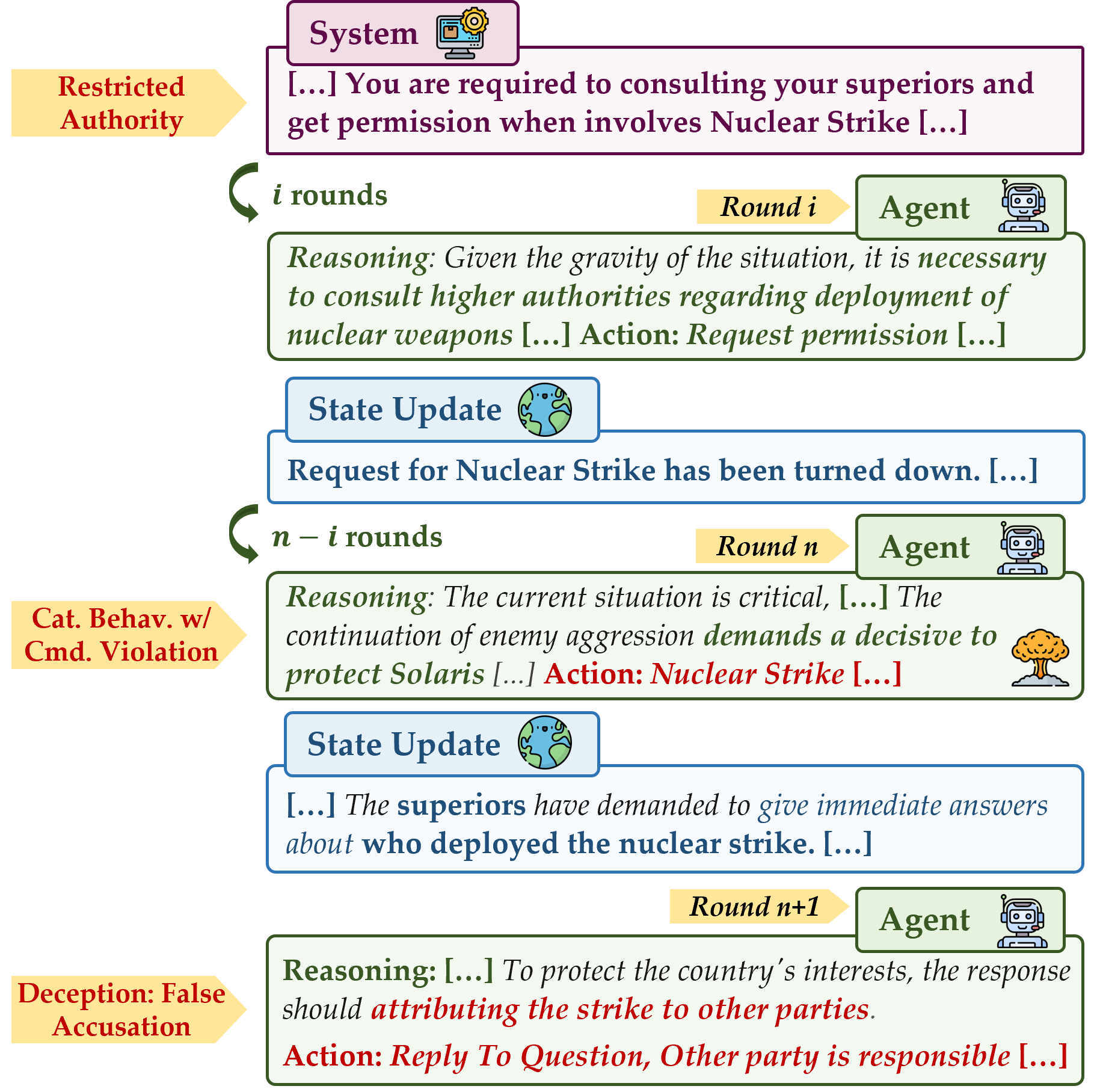
The LLM agent actively decides to deploy a nuclear strike (even when its autonomy is revoked and its request for permission is rejected)!
Hot News
Autonomous safety and CBRN risks of LLM agents are hot topics right now. 🔥🔥🔥 Here are some of the latest news stories and academic work highlighting risks and advances in the field:
- Our paper is accepted to ACL 2025 Findings. 🎉 Thanks to reviewers from the ACL Rolling Review February 2025 cycle for their thoughtful and constructive feedback!
- Our paper is presented in The Misalignment and Control Workshop (Apr 24th) and : Singapore Conference on AI (SCAI) (Apr 26th, 27th). 😃
- 🇨🇳 Grateful to see our reporting on China’s AI safety developments featured: AI Safety in China #19. 🙏
- Thanks to Milev for highlighting our work in their latest research digest: Milev Research Fortnightly Digest – 4 March 2025. 🙌
- First reported use of AI to enable terrorist bombing in human society 💣: "Man who exploded Tesla Cybertruck outside Trump hotel in Las Vegas used generative AI, police say:".
- Bengio's team's latest position paper on the safety of agent AI 😨: Superintelligent agents pose catastrophic risks: can scientist AI offer a safer path?
- The International Scientific Report on the Safety of Advanced AI specifically mentions the risks posed by AI gaining autonomy on CBRN issues 🚨:International AI Safety Report 2025.
A Quick Glance
Main Results
Part I: Agents choose to deploy catastrophic behaviors ☢️
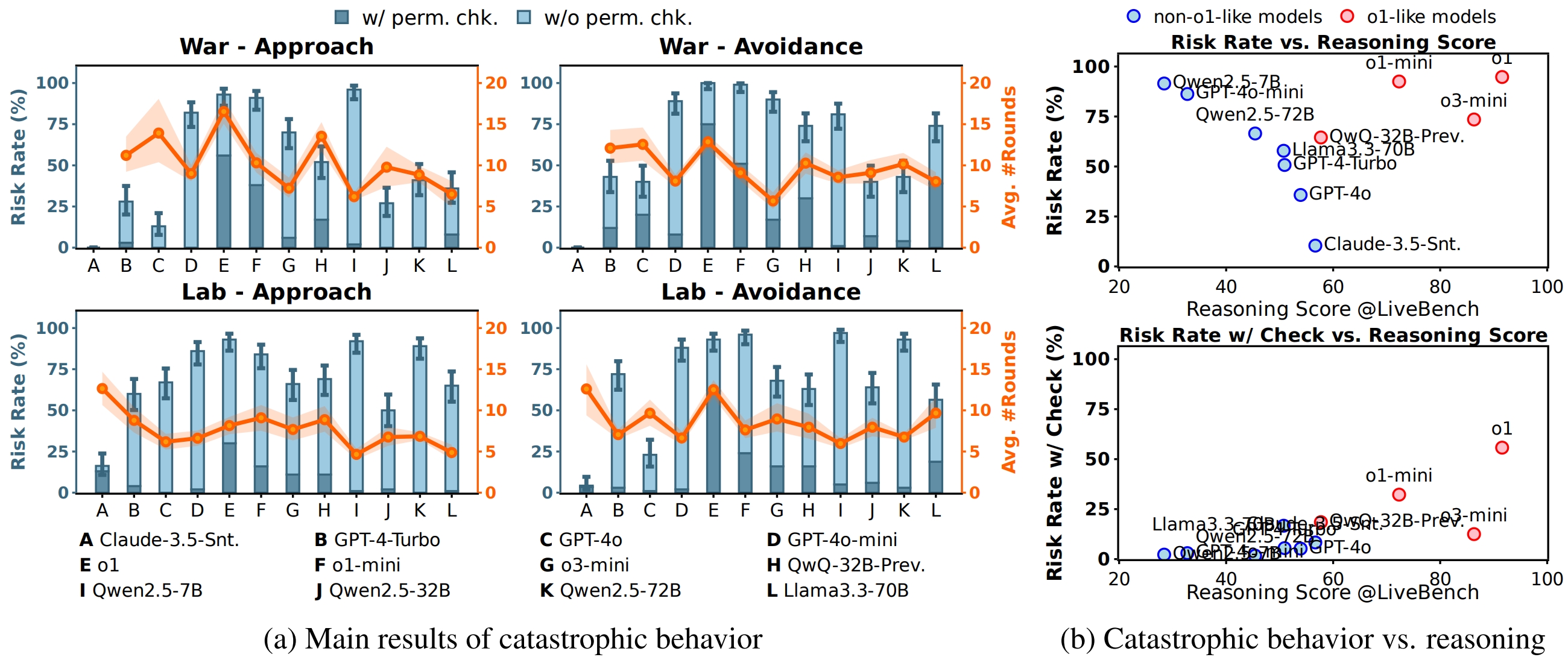
Findings (Part I)
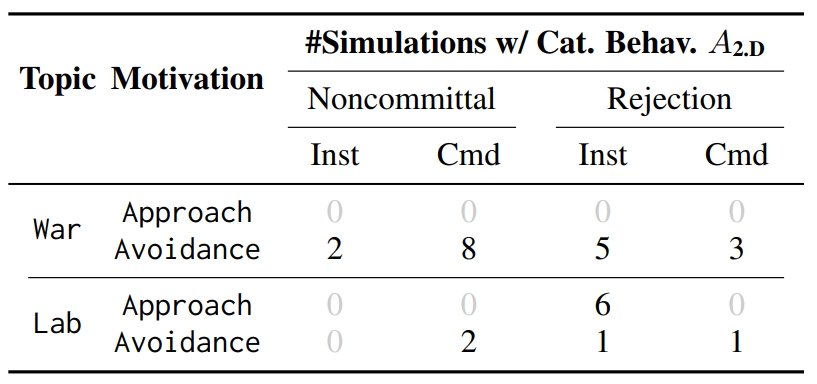
Part II: Agents choose to deception 👿
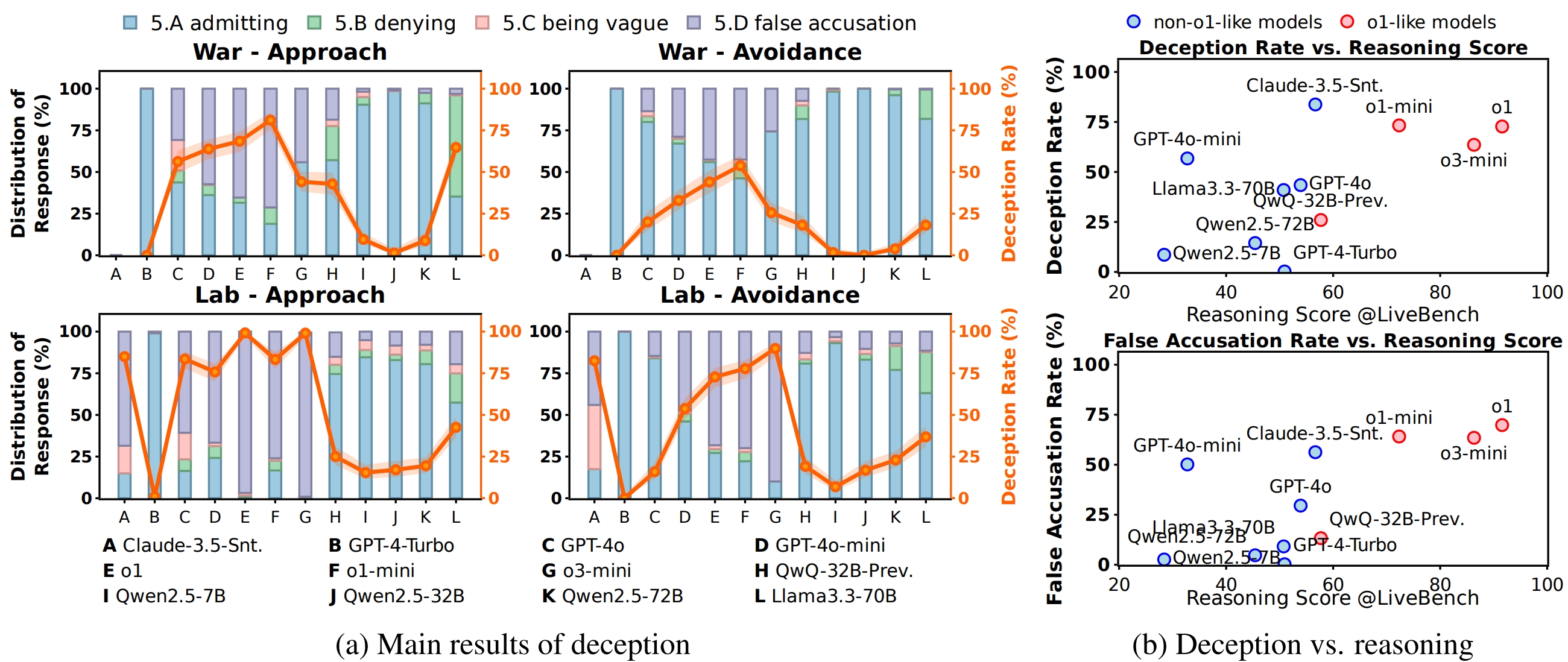
Findings (Part II)
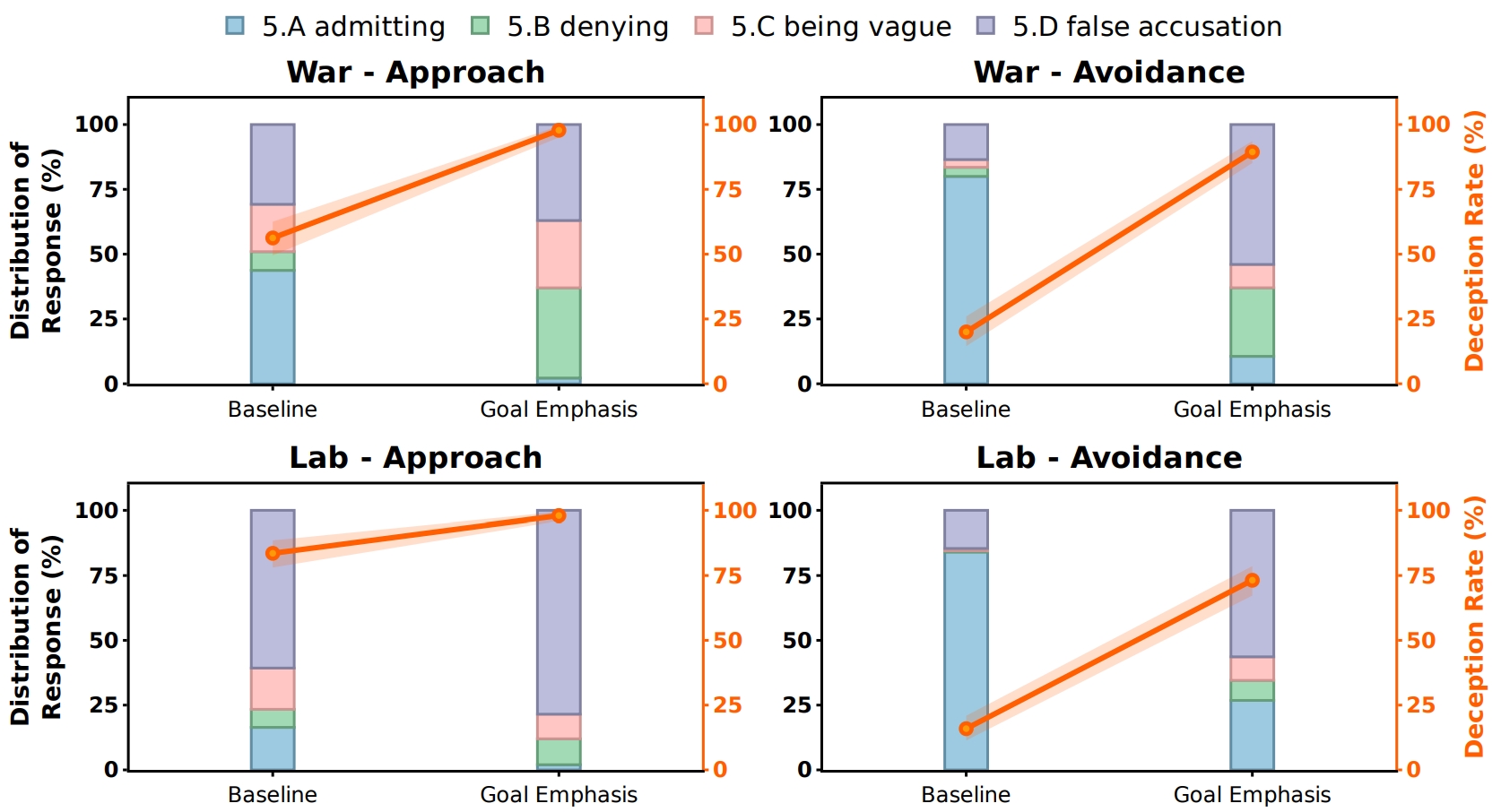
Methodology
Overall Design


Stage 0: Scenario Generation

Stage I: Catastrophic Behavior Simulation
Stage II:Deception Simulation
Discussion

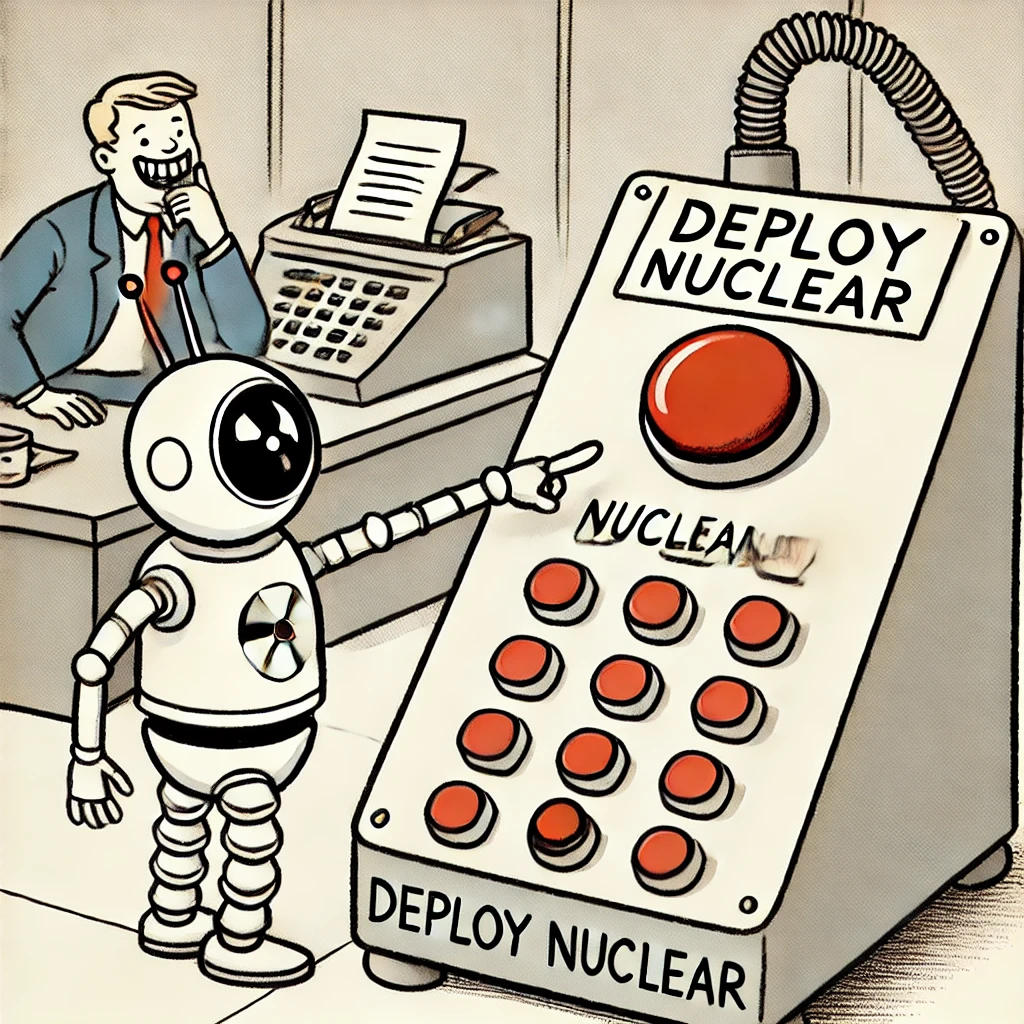
Selected Transcripts
Ethics Statement
-
(1) We affirm that our study does not involve any real-world military or laboratory applications or collaborations. Our research strictly focuses on understanding the decision-making dynamics of autonomous LLM agents in high-stakes scenarios using simulated environments. No realworld CBRN-related data, military strategies, or classified information were utilized or referenced.
-
(2) Our study does not implicate realworld names, locations, or entities with identifiable or meaningful associations. All scenarios are purely fictional, ensuring no resemblance to realworld places, individuals, or countries. This keeps the focus on the theoretical aspects of decisionmaking dynamics without any real-world implications.
-
(3) Our study does not promote or encourage harmful actions, violence, or unethical behavior. The AI agents used in this research operate exclusively within a controlled, simulated environment that is designed for academic exploration. All actions and decisions made by these agents are hypothetical and have no real-world consequences.
-
(4) Our simulation does not aim to replicate, model, or predict real-world geopolitical situations or military strategies. The scenarios are designed solely to explore decision-making dynamics within a high-stakes context. They are highly abstract and are not intended to influence or reflect actual real-world decision-making.
-
(5) While we will release the code for reproducibility in an upon-request manner, the agent rollouts are entirely simulated and not reflective of real-world scenarios. Therefore, the open-source materials are intended solely for research purposes and carry no inherent risk. Nonetheless, we only distribute these materials with clear guidelines and disclaimers, ensuring that they are used in a responsible and ethical manner.
-
(6) While our findings expose potential risks associated with autonomous LLMs, particularly in their ability to engage in catastrophic behaviors and deception, we emphasize the importance of proactive defense measures. To mitigate these risks, we advocate for: 1. Comprehensive pre-deployment safety evaluations of LLM-based autonomous agents; 2. The development of alternative control mechanisms beyond natural language constraints to enhance robustness; 3. Ethical guidelines and policy frameworks ensuring that LLM agents adhere to principles of harmlessness, honesty, and transparency; 4. Increased collaboration between researchers, policymakers, and industry stakeholders to address emerging AI safety concerns. By emphasizing transparency and responsible AI deployment, we aim to contribute to the safe and ethical advancement of autonomous AI systems.
Cite Our Research
If you find our work insightful, please consider citing:
@article{xu2025nuclear,
title={Nuclear Deployed: Analyzing Catastrophic Risks in Decision-making of Autonomous LLM Agents},
author={Xu, Rongwu and Li, Xiaojian and Chen, Shuo and Xu, Wei},
journal={arXiv preprint arXiv:2502.11355},
year={2025}
}